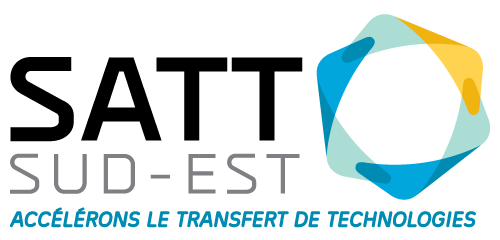The PACTE law, a strong will to boost and intensify the links between public research and the private sector. Objectives ? To lift the brakes on the entrepreneurial adventure: to simplify procedures, capitalise on the diversity of situations, make the transition from one system to another more fluid and make the journey of researchers wishing to embark on an entrepreneurial adventure safer.

The new technologies sector and public research create jobs and contribute - at their level - to French economic growth. In order to increase exchanges between the world of research and companies, the 1999 law on innovation and research, known as the "Loi Allègre", established three mechanisms to encourage the transfer of technology from public research to companies by creating a framework that allows researchers to create or participate in the life of a young innovative company, in parallel with their employment in a public laboratory.
Despite this, a very small percentage of researchers have applied for authorisation to benefit from one of the business creation participation schemes (i.e. less than 0.01% of people working in public research each year). Moreover, only 0.8% of researchers working in public research are recruited by companies. These figures confirm that researchers are blocked by obstacles to the entrepreneurial adventure.
Following a series of interviews, Audrey GARCIA-COUSTEAU, Lawyer at SATT Sud-Est, co-edits this series of articles. Concerning the latest developments in terms of legislation and innovation, Anaïs PIERRI DE MONTLOVIER, Business Law & Licensing Lawyer at the SATT Sud-Est, answers questions concerning researchers-entrepreneurs.
On the menu of episode 3: research personnel and corporate/start-up involvement, what are the possibilities?
Anaïs, what are the main features of the research staff in the company ?
Since the 1999 Allègre law on innovation and research, there are three main measures that I will describe in detail:
The first one, the creation of a company by research personnel (called "Article 25-1") allows researchers of a public laboratory to participate in the creation of a start-up as partners or managers in order to valorise the research work he or she has carried out in the exercise of his or her functions within the public laboratory,
The second, or scientific assistance (known as "Article 25-2") allows researchers to provide scientific assistance to an existing company and to participate in its capital1. The researcher is authorised by his or her hierarchy to provide scientific assistance within a company, whether newly created or not, to promote his or her own research work,
Finally, participation in the governance of a public limited company (called "Article 25-3") allows researchers to participate in the capital of the company by keeping their functions and participating only in the board of directors or supervisory board. The presence of a researcher attached to a public laboratory in the governance of an innovative company makes it possible to raise awareness of the company's management bodies about research progress and to promote the dissemination of public research results.
_________________________________________
1 Articles L531-8 to L531-11 of the Research Code
What are the main changes following the PACTE law?
The PACTE law includes various measures that update the measures introduced by the Allègre law in order to promote the rapprochement between public research and companies and, in particular, relaxes certain rules for the creation of companies for researchers.
The first development concerns the relaxation of the prior authorisation procedure. Before the PACTE law, applications from researchers were submitted to an ethics commission which had to rule on whether or not there was a conflict of interest between the researcher's public activity and the private activity envisaged. With the PACTE law, this procedure has been simplified: referral to the ethics commission is no longer mandatory and the employing institution is now able to issue directly this authorisation allowing the researcher to create or take part in the life of a company.
A second development concerns the arrangements relating to the researcher's working time within the company. Previously, when a researcher opted for the company creation scheme, it was necessary for the researcher to stop all public service activities. From now on, the researcher may choose to be seconded on a full-time or part-time basis, and thus continue to carry out an activity in the public service. He or she will be able to continue certain functions in his or her research institution for a volume of hours defined and set out in the authorization. The PACTE Act has increased the amount of working time that can be devoted by the researcher to a company. It is therefore possible for the researcher to devote up to 50% of his time to the company in parallel with his research work in the laboratory.
Finally, a further development concerns the acquisition of holdings in the company's capital. When the authorisation granted to the researcher-entrepreneur came to an end, two options were possible: the researcher had either to sell his shares within one year or opt for the third option (participation in the governance of a company) in order to continue his activity in the company. With the PACTE law, the researcher is now prepared to retain a stake in the company's capital of up to 49% when he decides to return to the public research service.
For a more detailed presentation of these three systems with the contributions of the PACTE law, refer to the section below " to go further ".
Anais, could you tell us the reason for these developments?
The PACTE law marks a strong will to energize and intensify the links between public research and the private sector in order to encourage research civil servants to concretize their wish to take part in the entrepreneurial adventure.
To achieve this, the changes brought about by the PACTE law aim to remove the obstacles to the entrepreneurial adventure: to simplify procedures, take into account the diversity of existing situations, make the transition from one system to another more fluid and finally to make the career path of researchers wishing to create or participate in the life of a company parallel to their activity in the public sector more secure.
To remember, I would say that the PACTE law meets the objective of developing mobility in companies among public researchers by introducing greater flexibility between devices and greater flexibility at the exit of these devices.
To go further
- Episode 1 - The PACTE & Innovation law: the sole agent to support the valorisation of research results
- Episode 2 - PACT & Innovation Act: deployment of measures to ensure better protection of inventions
- PACT Act
- Enforcement Decree
@SATTse_ @INPIFrance #Property #Innovation #Law #Patents #Inventions




